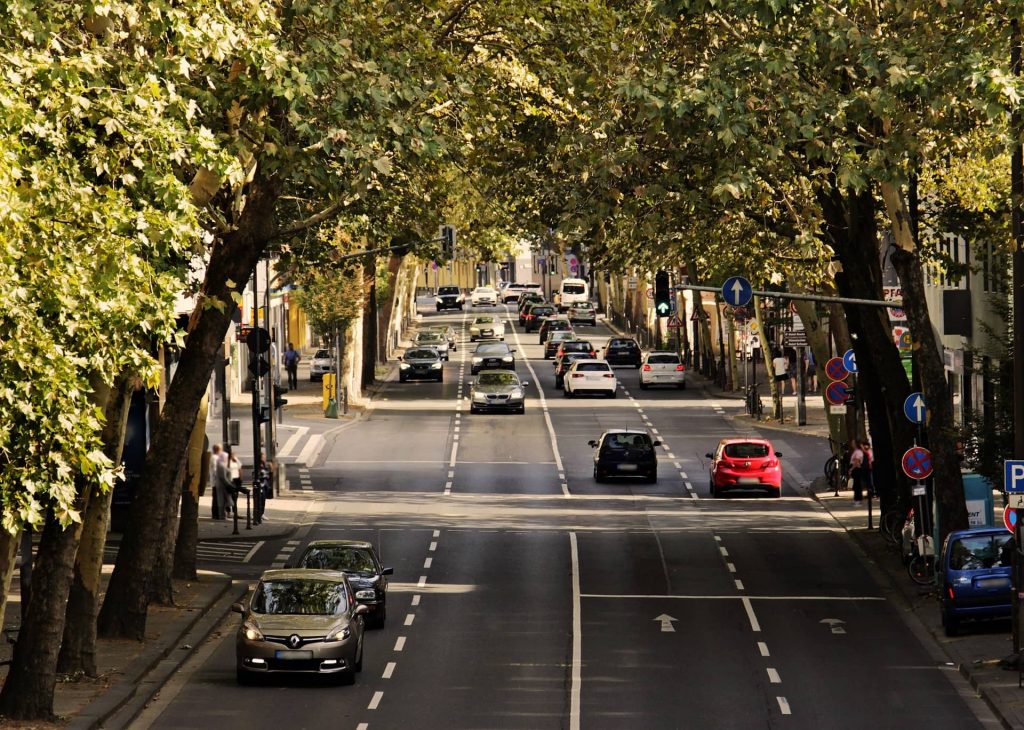Written by Rebecca Varghese

As a commuting student for three years, I feel I have perfected my daily route to and from school. For example, I know which streets to avoid at each time of the day and which lanes on the freeway move the fastest. Last September, however, I got stuck in serious traffic because of road construction. A few months passed and I noticed that the once four-lane road was now being thinned down to just two lanes. I did not understand how this deliberate change could bring about any good to the city residents or the shops that lined each side of the street. I thought this was a disaster just waiting to happen. But after doing some research, I learned that this was actually happening to prevent disaster.
Road dieting is a relatively old, but only more recently popularized technique that reduces the number of through lanes in attempt to reduce automobile traffic. Priority is given to pedestrians and bicyclists by installing pedestrian refuge islands and bike lanes with the reclaimed space [1]. Road dieting can be used in all types of city environments—those that are highly commercialized as well as those that need to be more social and livable. Studies by the U.S. Department of Transportation (USDOT) show that road dieting can significantly reduce traffic accident rates by 20%, even 50% in small urban areas [1]. It is considered to be one of the “greatest success stories in the transportation field” according to Libby Thomas of University of North Carolina Highway Safety Research Center [2].
Road dieting can be seen as an effectively large stride in the public health field as well. The American Public Health Association encourages cities to follow a healthy community design, which promotes an increasingly active and social lifestyle with decreased dependency on automobiles [3]. With fewer cars on the road, there will be decreased air pollution, thus resulting in improved respiratory and cardiovascular functions. Healthy community designs plan for major institutions like schools, hospitals, churches, markets and homes to be built within close proximity to each other to further encourage minimal use of automotive transport and promotes increased social interaction. Many large and already developed cities, like Los Angeles and Austin, are starting to modify their city layout to align themselves with a healthy community design [4]. Road dieting is just one of the many ways to achieve this and it is not necessarily an expensive project. At the very minimum, new lanes need to be re-striped on already existing roads [2].
Road dieting may seem like an inconvenience because of the difficulty in getting around town on a 4-wheeler. Maybe try a 2-wheeler or just 2-feet the next time. It’s a small sacrifice to make for the greater good. Like the USDOT says, “it’s a win-win for quality of life.”
References:
1. Road Diets (Roadway Reconfiguration) – Safety | Federal Highway Administration.” Road Diets (Roadway Reconfiguration) – Safety | Federal Highway Administration. N.p., n.d. Web. 09 Feb. 2017. <https://safety.fhwa.dot.gov/road_diets/>safety.fhwa.dot.gov/road_diets/
2. Jaffe, Eric. “So What Exactly Is a ‘Road Diet’?” CityLab. The Atlantic, 12 Sept. 2014. Web. 09 Feb. 2017. <http://www.citylab.com/design/2014/09/so-what-exactly-is-a-road-diet/379975/>.
3. “Healthy Community Design.” Healthy Community Design. APHA, n.d. Web. 09 Feb. 2017.<https://www.apha.org/topics-and-issues/environmental-health/healthy-community-design>.
4. UNIQUE PARTNERSHIPS: Advancing Healthy, Active Living in Austin, Texas. N.p.: American Public Health Association, 2016. Print.
Additional Resources
https://www.cdc.gov/features/healthycommunities/